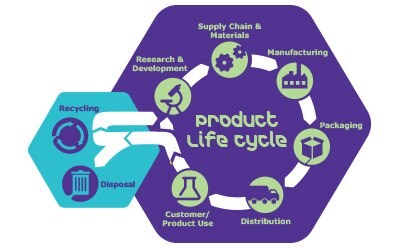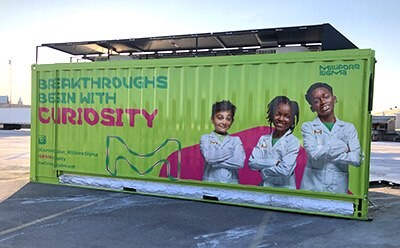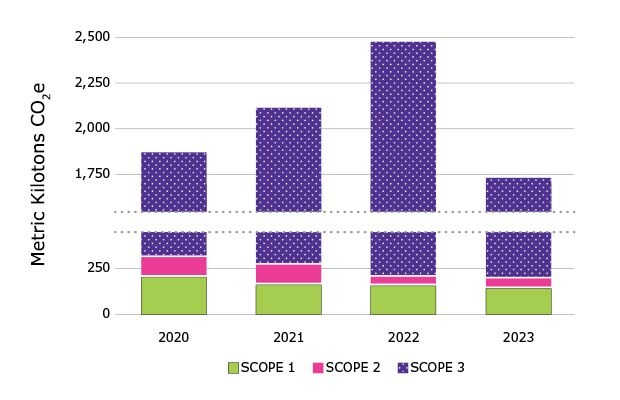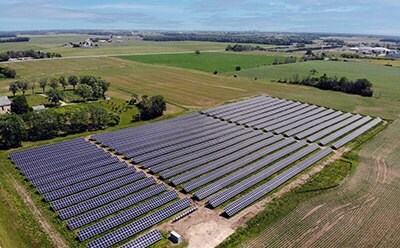Our Sustainability Strategy

Our sustainability strategy is anchored in reducing environmental impact across the entire product life cycle. We extend this commitment to enabling sustainability in science for our people, our communities, and the next generation of scientists.
By embedding sustainability across our business, our efforts to achieve our sustainability goals also supports you in your sustainability journey. In 2020, we established a Group-wide Sustainability Strategy, aligned with the United Nations’ Sustainable Development Goals (SDGs), and from this we have made three ambitious commitments:
- Dedicated to Human Progress: In 2030, we will advance human progress for >1 billion people through sustainable science & technology.
- Partnering for Sustainable Business Impact: By 2030, we will fully integrate sustainability into our value chains.
- Reducing our Ecological Footprint: By 2040, we will achieve climate neutrality and reduce our resource consumption.
In May 2022, we were confirmed to the Science Based Targets initiative. Together, we can multiply our impact to address this urgent, shared global need. Learn more about the actions we’re taking below:
GOAL 1: DEDICATED TO HUMAN PROGRESS
Being dedicated to human progress, we’re focusing on sustainable innovations and technologies for our customers and the impact of our products on health and wellbeing. These initiatives support the SDGs 3, 8, 9, and 17.
Learn more how our Life Science business contributes to Goal 1 of our corporate Sustainability Strategy:
2030 ambition:
- 10% of portfolio consists of Greener Alternative Products
We already offer thousands of Greener Alternative Products and aim for approximately 10% of our portfolio to be Greener Alternatives by 2030.
We take a holistic, data-driven approach to drive sustainability improvement across the entire product life cycle supported by SHAPE, our design for sustainability framework. Learn more how we’re embedding sustainability into product design here.
We also use DOZN™, our online Green Chemistry evaluator tool, to assess the sustainability of various chemicals and target improvements. This tool is also available for free to anyone to use. Learn more here.

2030 Ambition:
- Curiosity Cubes on six continents, 10 Cubes in total
- 14 Curiosity Labs™ lessons available
We focus on increasing global access to science and hands-on science education based on a diverse and inclusive environment that we accelerate through our Curiosity Cubes and Curiosity Labs™ programs.

2030 ambition:
- 14.5 million students reached
- 10,300 faculty engaged
- 500 Green Chemistry Commitment signers globally
In partnership with the nonprofit organization Beyond Benign, we’re helping drive scalable and systemic change to incorporate green chemistry education in 500 higher education institutions globally.
GOAL 2: PARTNERING FOR SUSTAINABLE BUSINESS IMPACT
By partnering for sustainable business impact, we’re focusing on a sustainable and transparent supply chain, sustainability in our ways of working & decision-making, and providing a diverse and inclusive environment for our people and communities. These initiatives support SDGs 5, 8, 12, and 17.
Learn more how our Life Science business contributes to Goal 2 of our corporate Sustainability Strategy:
2030 AMBITION:
- Fully integrate sustainability into all our value chains
We engage with our suppliers for greater transparency and sustainability data, while also enabling them with tools and best-practices to make greener decisions for their own operations.

2030 Ambition:
- Full product carbon footprint for entire portfolio available to customers
We collaborate with our customers to help them reduce their environmental footprint. Through product carbon footprints and customer-specific sustainability data, we’re supporting our customers along their sustainability journey.

GOAL 3: REDUCING OUR ECOLOGICAL FOOTPRINT
- By 2030, we aim to achieve a 50% reduction in Scope 1 & 2 emissions, and a 30% reduction in Scope 3 emissions compared to our 2020 baseline.
- By 2040, we aim to achieve climate neutrality across Scopes 1, 2 and 3.
2023 PROGRESS:
- 37% reduction in Scope 1 & 2 emissions
- 2% reduction in Scope 3 emissions
To reduce our ecological footprint, we’re focusing on climate change and emissions, water intensity and waste circularity. These initiatives support SDGs 9, 12, 13, and 17.
Learn more how our Life Science business contributes to Goal 3 of our corporate Sustainability Strategy:
2030 AMBITION:
- 10% reduction in packaging weight per unit sales vs. baseline
- 100% of new packaging designed following circularity principles
- 100% of fiber-based packaging deforestation-free
This strategy drives sustainability improvements into both new and existing product packaging. Through this initiative, we set high standards to SHRINK, SECURE, SWITCH and SAVE packaging.
2030 AMBITION:
- Neutralize product plastic footprint by developing recycling programs for customers
- At least 10 products containing greener polymers
We're developing circular recycling solutions to reduce the amount of plastic in the value chain and offer cost-effective re-processing of the plastic waste back into products and packaging within our supply chain.

2030 AMBITION:
- 80% renewable electricity globally for Life Science business
We directly invest in and enable projects that add new renewable energy capacity, both on- and off-site.
CORPORATE RESPONSIBILITY REQUEST INFORMATION
To continue reading please sign in or create an account.
Don't Have An Account?